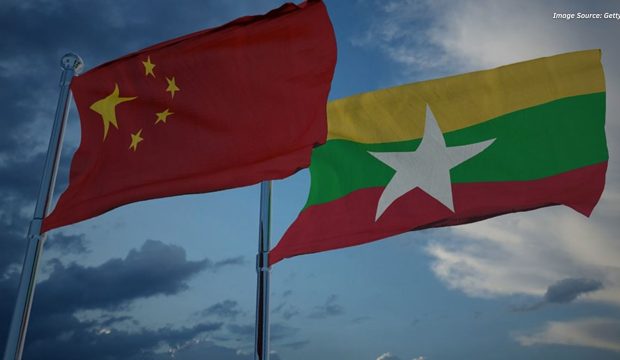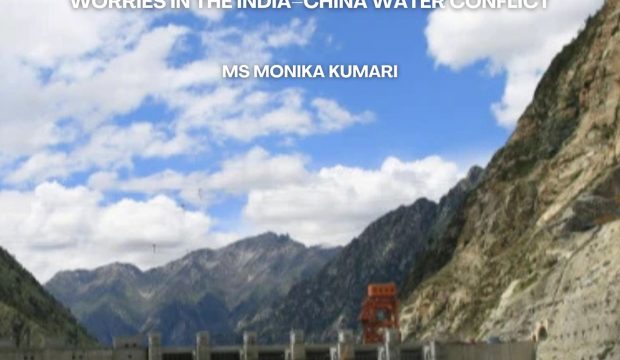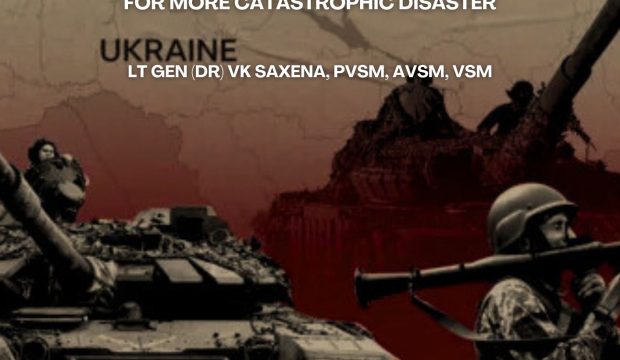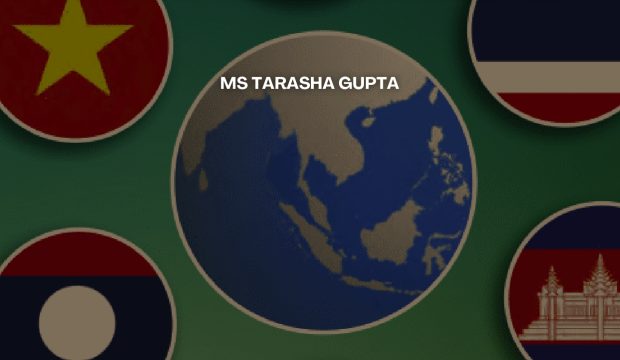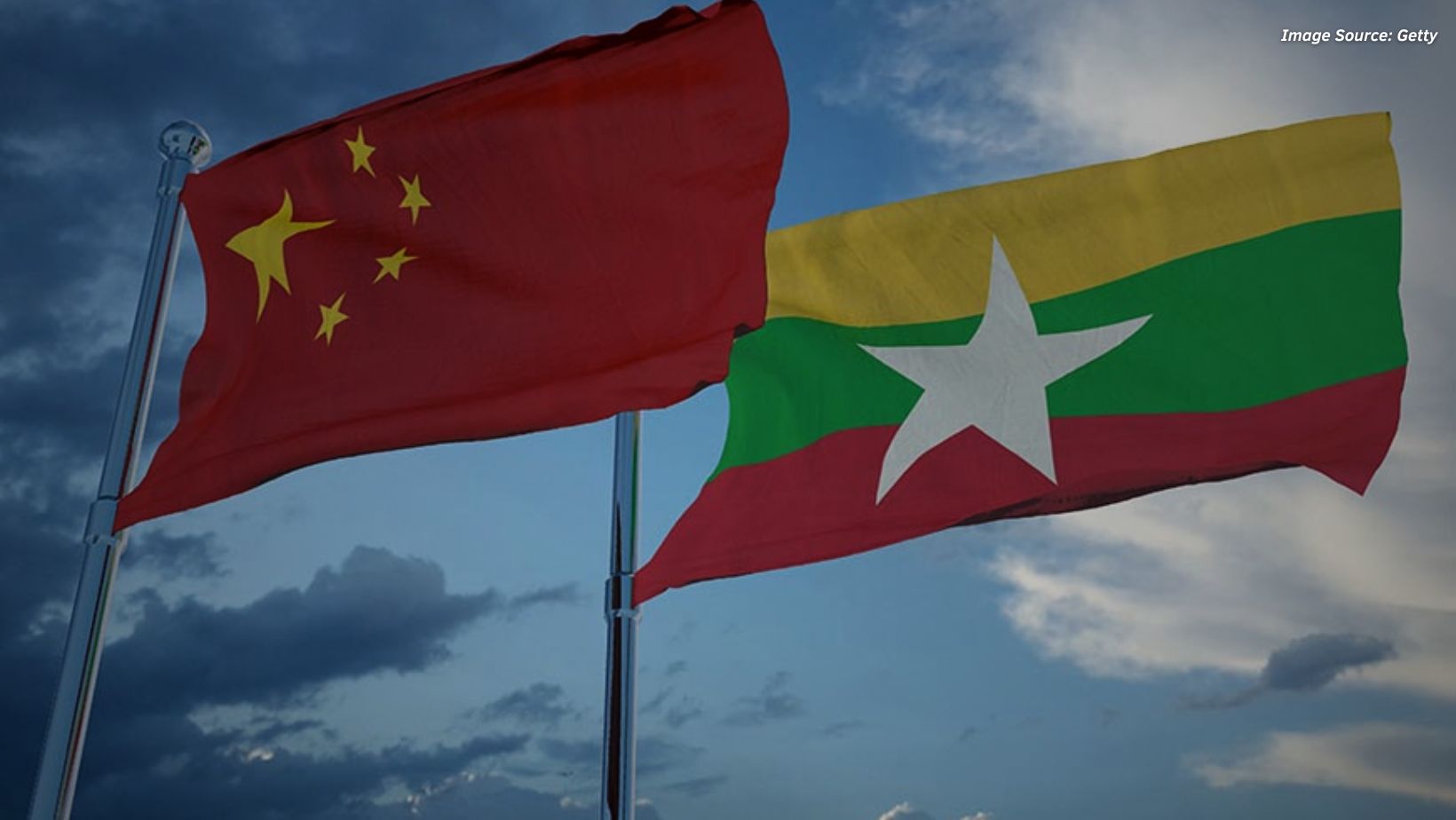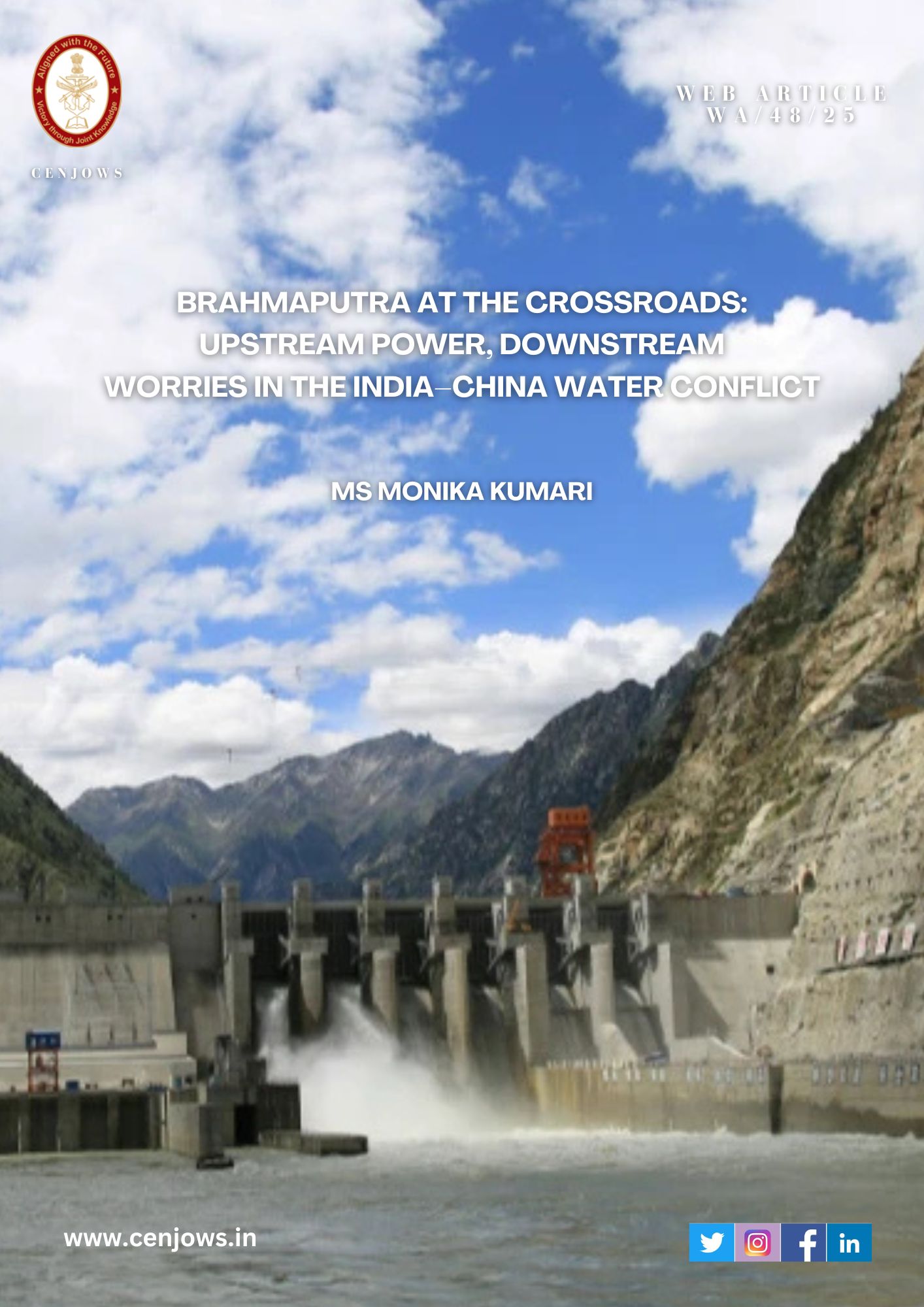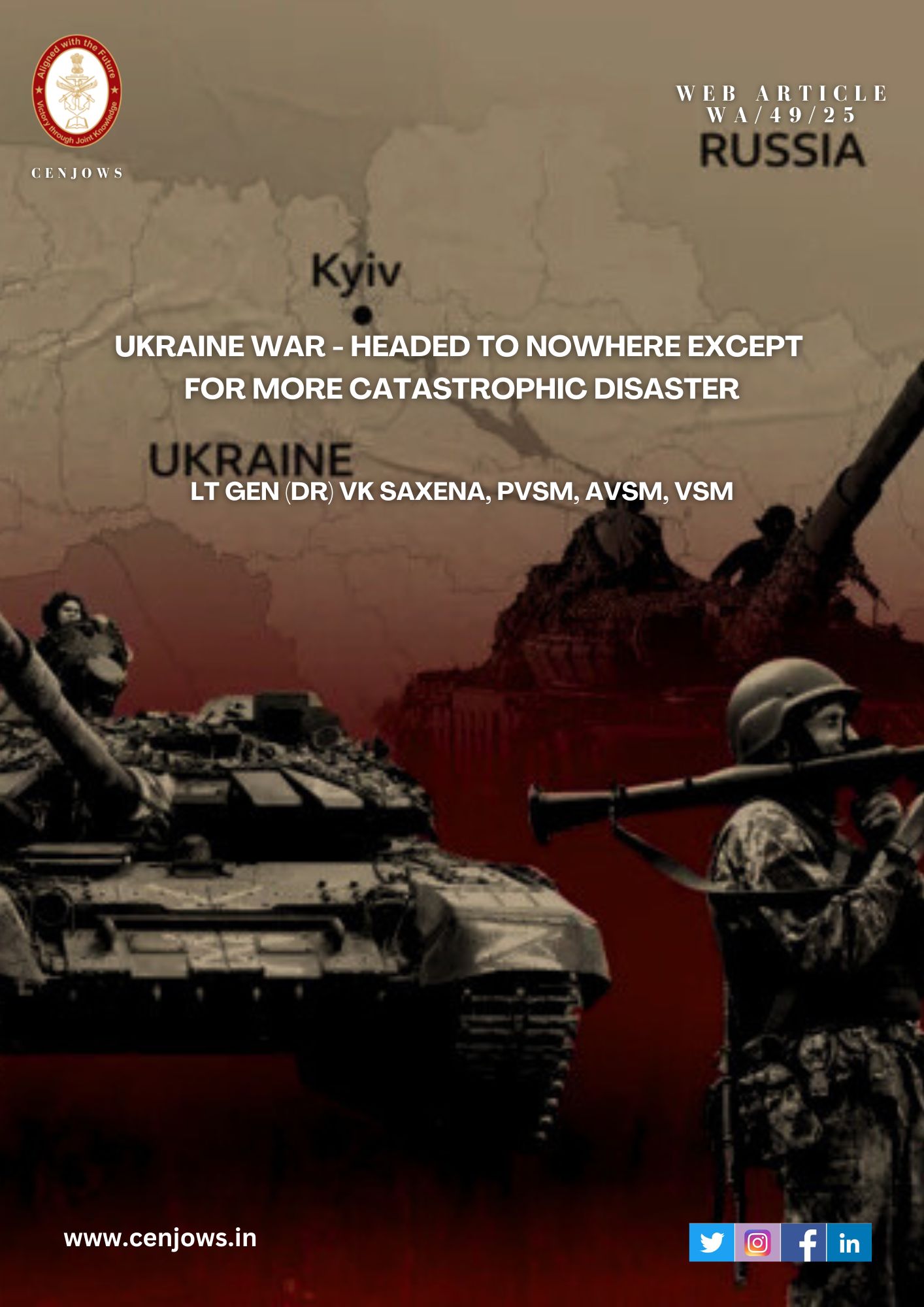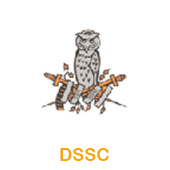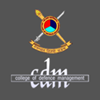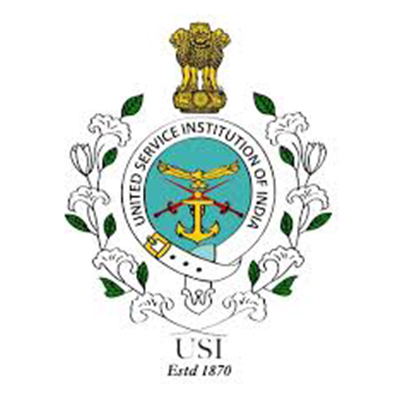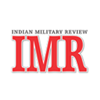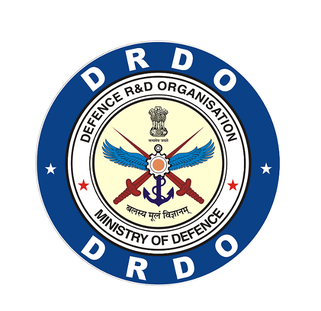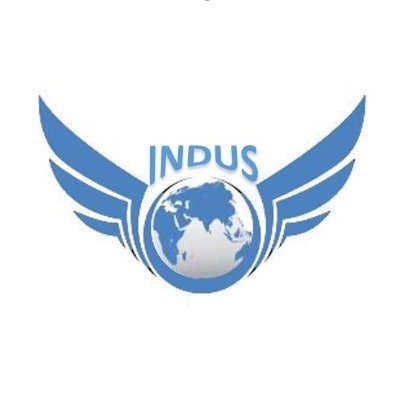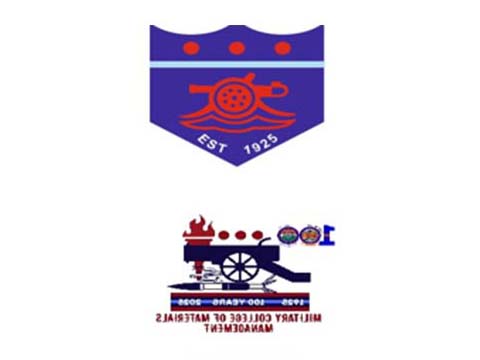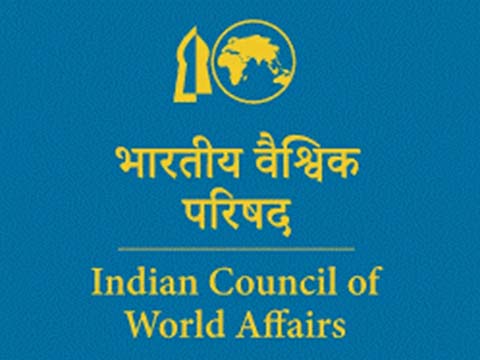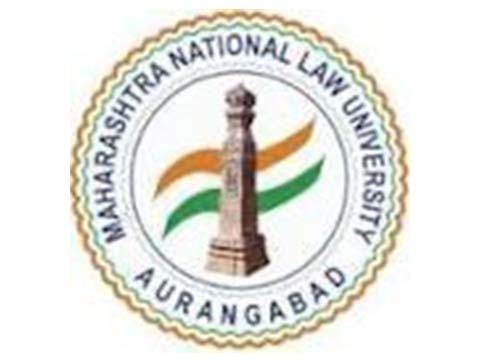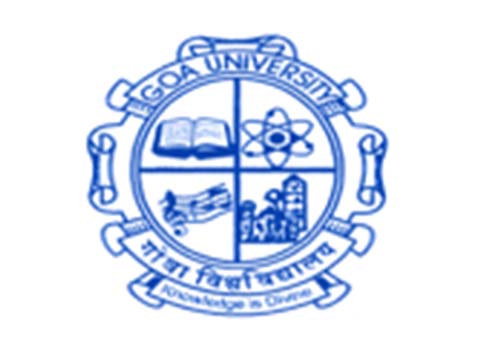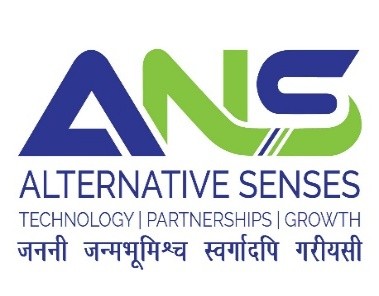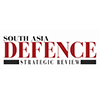Abstract
The return of Donald Trump to the White House has already led many countries in Asia to prepare for a period of uncertainty and unpredictability in American policy making. Asia is the primary site of the unfolding great power rivalry between China and the United States. The former is Asia’s foremost economic power with a history of being able to exert influence as far away as the Eastern coast of Africa when the fabled Admiral Zhang He led his seven voyages.1 The latter is a more recent presence in the region but one that has shaped itself into a major player in the region, nevertheless, through its economic and military might and the ability to project power to places far from its shores. The Lowy Institute’s Asia Power Index ranks the United States as the most powerful military power in Asia, followed by the People’s Republic of China.2
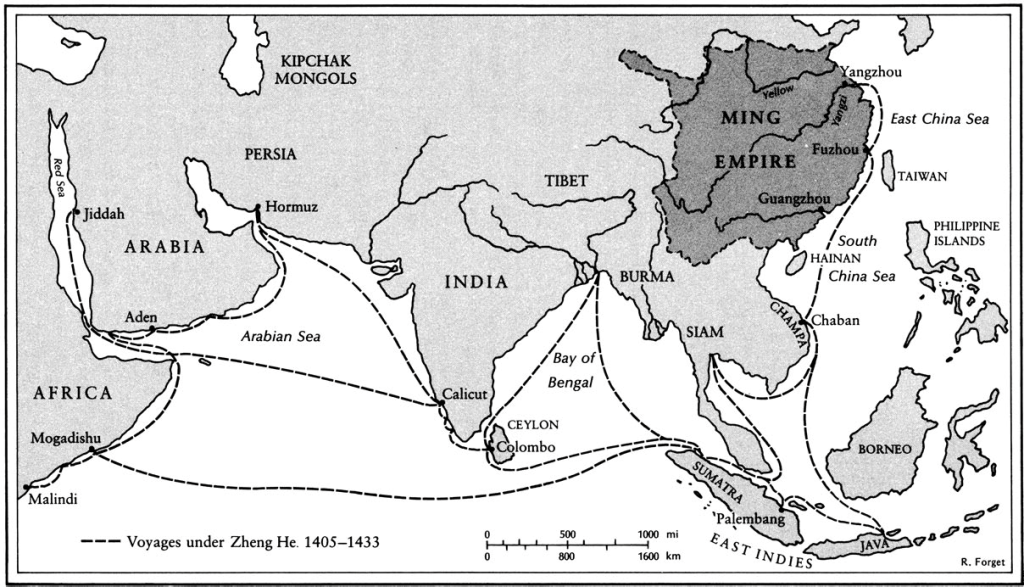

Following the birth of the People’s Republic in 1949, the threat of American Imperialism has often troubled its leaders, starting from Mao, and it has often found itself embroiled in efforts to thwart American military action in Asia since, whether in Korea in the 1950s or Vietnam a few decades later. The rapprochement between the two, caused by a mutual suspicion of the USSR in 1972, saw the two powers grow closer. This trend was kept largely intact under Mao’s successors such as Deng Xiaoping, Jiang Zemin and Hu Jintao, as Beijing prioritised economic development over confrontation. However, this largely peaceful period of cooperation and opening up also saw periods of tension and confrontation, such as the third Taiwan Strait Crisis in 1995-96.4 Under Xi Jinping, however, China has grown to be more assertive across the region, from the border with India and the South China Sea to the Taiwan Straits. The US ‘pivot’ to Asia, started under President Barack Obama in 20115, sought to increase American engagement with Asian states and make up for the neglect the region had suffered in American policymaking in the recent past. This set the US on a confrontation course with the PRC, an intensified trend under subsequent US presidents. As China seeks to continue its rise, it will naturally seek to assert itself in Asia first and do so in a myriad of ways.
Chinese Strategic Posture in Asia from 1949-2013: From Assertiveness to Accommodation
Following their victory in the civil war in 1949, the foreign policy of the People’s Republic of China was very much formulated by its leader, Mao Zedong. Mao identified the United States as the PRC’s principal threat both ideologically and because of the support the United States provided to the Kuomintang (KMT) as well as its network of bases, which Mao believed were meant to encircle the PRC.6 This anti-US stance was acted on when the People’s Liberation Army (PLA) was sent into Korea in support of the communists, even as the USSR advised against this. While Mao’s decision to intervene in the Korean War saved the Communist government in Pyongyang and China’s north western border, it solidified American thinking that China represented a serious threat in Asia and the need to secure Taiwan against a communist assault. Mao continued opposing American actions by providing support to North Vietnam. The emergence of cracks in the relationship with the USSR and the US’s desire to draw down the conflict in Vietnam meant that the two would eventually reconcile, driven by their mutual mistrust of the USSR, but Taiwan remained a sticking point. Beyond rivalry with the US, the PRC also continued to assert itself regionally under Mao, expanding into Tibet and Xinjiang in the late 1950s and later fighting a border conflict with India in 1962 wherein the PLA emerged victorious. This pattern of extending Beijing’s reach in Asia while asserting itself through the use of military force was thus visible throughout the early years of the PRC, from Korea to Vietnam and India to Taiwan and even in limited border skirmishes against the USSR in 1969.
Following Mao Zedong’s death in 1976 and the rise of Deng Xiaoping in 1978, China took a more economy-centric approach to its foreign policy. Deng sought to lead China down a path of modernisation and economic growth by absorbing technology from the West. This, however, did not mean that China was scaling back its willingness to engage in conflict to assert its will. This period coincided with a relative improvement in US-Soviet relations as the USSR sought to counter growing Sino-US closeness (which was interrupted due to Nixon’s ouster following the Watergate scandal). Having signed the Helsinki agreement with the West, the Soviets, under Leonid Brezhnev, shifted their attention to the East and announced that a greater part of the expanded defence budget would go to the Soviet Far East.7 The fear of Soviet encirclement was also a concern on China’s southern front, where an American withdrawal from Vietnam in 1973 meant the pro-Soviet regime of Northern Vietnam had emerged victorious. Vietnam’s invasion of Cambodia to overthrow the Khmer Rouge alarmed China, which launched itself into an attack on its communist neighbour in order to “teach Vietnam a lesson”.8 China’s willingness to act against its neighbours when it felt its interests were threatened showcased that Beijing would use force against anyone, even erstwhile allies like the USSR and Vietnam if it felt its fundamental interests were being threatened. In the case of Vietnam, it was possible that Chinese leaders saw that the prospect of a Vietnam, allied with Cambodia would threaten Beijing’s ability to exert influence in Laos, Cambodia and Indochina at large and acted accordingly.
The war with Vietnam was the last major war that the PLA fought as the party-state increasingly focused on ensuring the success of the opening up and reform period to bring economic prosperity to China. Internal issues such as the 1989 Tiananmen Square protests were dealt with in brutal ways as party bosses sought to ensure that economic reforms did not translate into greater calls for political reform and democracy. The slogan “hide your strength, bide your time” may have been coined by Deng Xiaoping, but as seen in Vietnam, he was more than willing to exercise military force to ensure China’s core interests were not compromised. His successors, Jiang Zemin and Hu Jintao, oversaw the period from 1993 to 2013, and a period in foreign policy was more in line with the slogan of Deng Xiaoping. Apart from the third Taiwan Straits’ crisis in 1995-96, there were few instances of China seeking to aggressively assert itself as a leading global power. This is understandable, given the global situation at the time, as the US had emerged as the world’s sole superpower following the end of the Cold War and the dissolution of the USSR in 1991. It was hardly a surprise then that China did not seek to antagonise the global order, especially after witnessing the display of American military superiority in the two Gulf Wars. Their ascension to the World Trade Organisation (WTO) in 2001 also meant that the wave of globalisation that followed the end of the Cold War allowed China to expand their economy by exporting large amounts of cheap consumer goods, and China was dubbed as “the factory of the worlds”. This period saw China largely focus on “peaceful development”, as phrased by President Hu Jintao. China also sought to mend ties with its neighbours during this period, working to improve ties with India, Vietnam, Russia and others. It also increased its participation in regional initiatives such as the ASEAN Regional Forum (ARF) and the Six-party talks over the Korean peninsula and launched initiatives of its own, such as the Shanghai Cooperation Organisation (SCO), to combat regional issues such as religious extremism.9 This period of relative calm and low-profile Chinese strategic posturing in Asia ended when Xi Jinping began his tenure as leader of the PRC in 2013, and China’s actions in the region became increasingly assertive.
Chairman Xi and the Return to Assertiveness
The 2008 global financial crisis exposed the underlying flaws in the economies of many Western states, and China’s relatively strong performance increased the confidence of Chinese elites. However, President Hu Jintao continued to walk a tightrope between moderation and assertion. President Xi Jinping has sought to change this approach and shift the nature of Chinese foreign policymaking from being a reactive one to one that seeks to shape the global situation through initiatives such as the Belt and Road Initiative (BRI)10 and more. He has also sought to be more assertive in safeguarding China’s national interests from Taiwan to the South China Sea (SCS) and enforcing its perceptions along the Line of Actual Control (LAC), as seen in the exercises around Taiwan, buildup in the SCS and the many standoffs between the PLA and India since 2013. Xi has also pushed China to achieve its dream of “National Rejuvenation”11, a move which can be viewed as trying to enforce a vision of the global order where in China, or “Zhongguo” (the “Middle Kingdom”)12 plays a more central role in global affairs by growing stronger domestically. While theoretical arguments about the thinking which drives Chinese foreign policy-making are beyond the scope of this paper, the shift in China’s strategic posture from one of moderation to assertion is undeniable.
Since 2013, Xi has made a number of moves to strengthen China’s position in Asia by forming a close partnership with Russia in the wake of the war In Ukraine, signed a strategic partnership with Iran in 2021 to increase cooperation across various sectors13 and has been a traditional backer of North Korea on the Peninsula. While these partnerships are far from a coherent alliance along the lines of NATO, they show the increasing value China places on building ties with anti-American forces in Asia. Beyond these, Beijing has upped its engagement with the Taliban since its return to power in Kabul and became the first country in the world to recognise the Taliban government in 2023.14 Pakistan, another traditional partner, continues to see large amounts of military and, more crucially, economic support from Beijing despite Islamabad’s myriad of political and security issues, which have claimed Chinese lives on more than one occasion. Many of the countries which have good relations with the US, on the other hand, have been on the receiving end of an increasingly assertive PLA. Japan’s Coast Guard recorded 1,287 instances of Chinese government vessels operating around the disputed Senkaku/Diaoyu Islands over 352 days in 2023.15 Taiwan’s military has similarly seen record levels of PLA activity in the Taiwan Straits with over 3000 PLA Air Force (PLAAF) flights into Taiwan’s Air Defence Identification Zone (ADIZ) in 2024.16 Finally, the Philippines has recently been involved in a naval tussle with the PLA over the Second Thomas Shoal, where the resupply of a grounded Philippines warship has been an issue of contestation.17 This is in the larger context of China’s expansion of artificial islands in the SCS, which has allowed it to position itself as the dominant military power in these crucial waters. It has also led to an uptick in tensions with other claimants, such as Vietnam and Malaysia, which have their own interests in the region.
This assertiveness is also reflected in China’s moves to launch global initiatives such as the Global Security Initiative (GSI), Global Development Initiative (GDI) and the Global Civilisation Initiative (GCI). These initiatives, while not well-defined policies (at least in public), represent Beijing’s attempt to try and shape the global debate on reforming the world order, presenting an alternative vision to the existing order. Ranging from promoting the concept of ‘indivisible security’, promoting the advancement of Sustainable Development Goals (SDGs) and allowing states to pursue modernisation without external interference, the initiatives are broad and generic. This broad framing, however, means that most non-Western states will either support or not openly oppose these initiatives and with time, Beijing can develop these ideas further to position itself in a more leading role in reforming the global order. The focus on “allowing states to modernise without imposing social models on them”18 can be seen as a direct retort against the “universal values” such as democracy and freedom which have been propagated by the US-led Western powers, particularly in the aftermath of the Cold War. When speaking about the GSI, Xi urged that “we (states) must adhere to the purposes and principles of the UN Charter, abandon the Cold War mentality, oppose unilateralism, and not engage in group politics and camp confrontation”.19 This, once again, is a reference to reject the US’s leadership as global hegemon and its attempts to form close partnerships in Asia such as the QUAD. These three initiatives must thus be viewed as part of China’s larger strategy to chip away at Western global leadership and to try and present China’s vision in the areas of global security, development and cultural interactions.
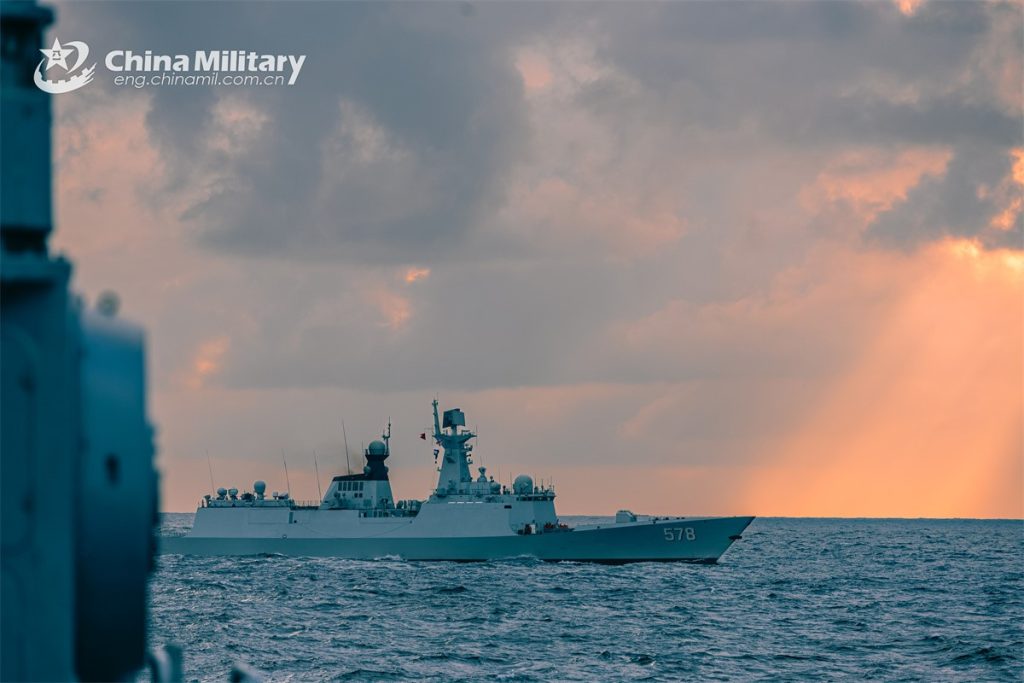
Implications of a More Assertive China
China’s increasing assertiveness under Xi Jinping and the great power rivalry between Beijing and Washington in Asia will have far-reaching consequences, presenting some with the opportunity to play one power against the other while forcing some to pick a side. Still, these will vary from country to country.
The ASEAN states, for instance, will be anxious given the disputes many of them have with Beijing on the issue of the SCS, where the PLA continues to enforce China’s views on the region even in defiance of international law and rulings. The prospect of a full-scale invasion of Taiwan also threatens the unity of the grouping as differences over how to respond may diminish ASEAN’s importance and even a breakup if the differences are deep and irreconcilable. Japan is likely to continue its military build-up and aim to play a greater role in regional security, as Prime Minister Ishiba has stated in the wake of increasing Chinese (and Russian) activity around the country21 and North Korean missile activity. This stance is unlikely to change with the coming of Trump and the accompanying unpredictability of his foreign policy on issues such as American defence of Japan and Korean de-nuclearisation. On the Korean peninsula, a growing partnership between North Korea and Russia complicates the situation as presented with an alternative to its only traditional backer, Pyongyang may not be as susceptible to Chinese pressure as before. Instability on the Korean peninsula goes against China’s interests and will serve as a distraction; this provides a limited scope for cooperation between China and South Korea, but the prospect of greater American presence in South Korea would counter this. How China approaches the Korean peninsula will depend on how the US acts and whether or not South Korea pursues its own nuclear programme as some have advocated.22 Given the recent escalation in the dispute, the issues between the Philippines and China are also likely to persist, further complicating issues in the SCS and for ASEAN, where divisions between members will likely deepen on the question of how to deal with China. Continued American involvement in the SCS will also continue to invite increased Chinese deployments with Beijing unlikely to be coerced in a region it sees as its backyard. Further West, Iran, Russia and the Taliban will likely continue to grow closer to China, given its vast economic resources and willingness to invest them in risky ventures and without the accompanying conditions on human rights and democracy, which often accompanies aid from global financial institutions and the Western powers.
Finally, China’s relations with regional powers, particularly India, are more complicated, given that there is an overlap in interests in certain areas and a divergence in others. There is scope for cooperation in areas like renewable energy, cooperation in reshaping global multilateral institutions to be more reflective of the growing importance of non-Western powers, etc. However, the recent thaw in Sino-Indian relations following a disengagement agreement is unlikely to develop into a broader foundation for cooperation between the two. Differences over their boundary, China’s persistent opposition to India’s entry into the UN Security Council, blocking of Indian moves to classify international terrorists as such at the UN and a general disagreement of their respective roles on the global stage mean that a complete normalisation is unlikely in the short to medium term. An increasingly assertive Beijing is likely to push India closer to the West, and Indian policymakers must continue to utilise all instruments at their disposal, military, diplomatic and economic, to ensure India’s interests are not compromised.
India’s Response
China’s growing willingness to resort to assertive means to enforce its interests presents a challenge to India, which is the pre-eminent power in South Asia and the Indian Ocean. These regions are extremely crucial for China as its western provinces, Tibet Autonomous Region (TAR) and Xinjiang Uyghur Autonomous Region (XUAR), share long borders here, and a large share of Chinese energy supplies come from the Indian Ocean. China has long sought to secure its vital energy supplies given the threat of interdiction in the Indian Ocean by the Indian or US Navy. This issue was termed the “Malacca Dilemma” by former Chinese President, Hu Jintao.23 China has also been a long-time supporter of Pakistan and, given the history of conflict between India and Pakistan, a growing Sino-Pakistan axis presents a threat to India. China may also seek to export its recently unveiled stealth fighter, the J-35, as it has done with other equipment in the past.24 China has also been deploying naval assets to the Indian Ocean with increasing frequency and conducting alleged seafloor mapping exercises under the guise of “scientific research”. While the present scale of the PLA Navy (PLAN) deployment to the Indian Ocean is not at a level where it can compete with the Indian Navy, they are a cause for concern.
India’s response to China’s increasing assertiveness must be grounded in a realistic assessment of the power imbalance between the two states in the economic, military and diplomatic spheres. China has a much larger economy and military budget than India and is further along in its reform process. These tools also mean that it makes for a more attractive diplomatic partner for many states, particularly in the global south. While this does not necessarily mean that India cannot stand up to China, it makes crafting a response all the more complex. Firstly, India must ensure the security of its interests in its neighbourhood. To do so, it must leverage historical ties with other South Asian states and make use of regional groupings like BIMSTEC to further regional integration and cooperation. It must cooperate with other powers, particularly Japan, to mobilise the necessary finances to fund development projects across South Asia, providing an alternative to Chinese financing. By tying its neighbours closer to itself, India can ensure that its interests are not compromised. The ‘neighbourhood first’ policy addresses this to an extent, but a joint development financing mechanism must be developed within it. Secondly, India must recognise that China’s technological advancements and reforms have given it a significant advantage in the military domain. India must increase its defence budget, particularly the part which is dedicated to R&D. This would ensure that India is ‘Atmanirbhar’ in the long run. Military reforms and theaterisation must also be fast-tracked to afford the armed forces sufficient time to adjust to the new command structures and train jointly. Finally, India must coordinate actions with others like Japan, Philippines and other Asian states which have been at the receiving end of China’s assertiveness. Doing so would allow others to fill the gaps where India might be lacking, allowing the development of a coherent response policy.
Conclusion
Asia is increasingly becoming the centre of a rivalry between China and the United States, and Beijing’s willingness to use force to assert its claims in the region showcases a return to a more assertive stance, as was the case under Mao. This assertiveness may reach an inflexion point in 2027 should the PLA feel it is ready to force a reunification with Taiwan as Xi has instructed, and should a full-scale invasion materialise, the consequences for regional and even global stability would be catastrophic. Such a scenario is certainly not inevitable, and Beijing would undoubtedly prefer to settle the reunification question peacefully. There is also the possibility that the PLA may not feel it is ready to take on a combined Taiwanese-American defence of the Island, considering the potential domestic ramifications of a defeat would be tremendous. Trump’s unpredictability has added another disruptive force to an already complex power balance in the region. Additionally, it is unlikely that China will back down should it successfully take Taiwan and will likely pursue a further overhaul of the global order to reshape it into something closer to its preferences. This, however, might strain its presently close relations with states like Russia. Nevertheless, the presently assertive shift in China’s foreign policy under Xi is here to stay, and China will continue to enforce its views wherever it feels it will succeed. The question now is whether this assertiveness will be focused on defending Chinese interests and the status quo or whether Xi will view this as the opportune moment to try and upend the existing order of things.
DISCLAIMER
The paper is author’s individual scholastic articulation and does not necessarily reflect the views of CENJOWS. The author certifies that the article is original in content, unpublished and it has not been submitted for publication/ web upload elsewhere and that the facts and figures quoted are duly referenced, as needed and are believed to be correct.
ENDNOTES
- Lo, Jung-pang. 2025. “Zheng He | Biography, Facts, & Significance.” Britannica. https://www.britannica.com/biography/Zheng-He.
- https://power.lowyinstitute.org/
- Fairbank, John King, and Merle Goldman. “Government in the Ming Dynasty.” In China: A New History, Second Enlarged Edition, 128–42. Harvard University Press, 2006. https://doi.org/10.2307/j.ctvjghv1z.13.
- “Confrontation Over Taiwan | Global Conflict Tracker.” 2024. Council on Foreign Relations. https://www.cfr.org/global-conflict-tracker/conflict/confrontation-over-taiwan.
- Hass, Ryan, Andrew Yeo, and Hanna Foreman. 2011. “The American Pivot to Asia.” Brookings Institution. https://www.brookings.edu/articles/the-american-pivot-to-asia/.
- Zhao, Suisheng. 2022. The Dragon Roars Back: Transformational Leaders and Dynamics of Chinese Foreign Policy. Redwood City: Stanford University Press.
- Ibid.
- Ryan, Mark A., Finkelstein, David M., McDevitt, Michael A., and Corporation, C. N. A.. 2002. Chinese Warfighting: the PLA Experience Since 1949: The PLA Experience Since 1949. Oxford: Taylor & Francis Group.
- Zhao, Suisheng. 2022. The Dragon Roars Back: Transformational Leaders and Dynamics of Chinese Foreign Policy. Redwood City: Stanford University Press.
- n.d. Belt and Road Portal – BRI Official Website. Accessed January 29, 2025. https://eng.yidaiyilu.gov.cn/.
- “Achieving Rejuvenation Is the Dream of the Chinese People.” 2012. Achieving Rejuvenation Is the Dream of the Chinese People- Xi Jinping: The Governance of China. https://www.neac.gov.cn/seac/c103372/202201/1156514.shtml.
- Dittmer, Lowell, and Yu, Maochun, eds. 2015. Routledge Handbook of Chinese Security. Oxford: Taylor & Francis Group. Accessed January 29, 2025. ProQuest Ebook Central.
- Chivvis, Christopher S. 2024. “Cooperation Between China, Iran, North Korea, and Russia: Current and Potential Future Threats to America.” Carnegie Endowment for International Peace. https://carnegieendowment.org/research/2024/10/cooperation-between-china-iran-north-korea-and-russia-current-and-potential-future-threats-to-america?lang=en.
- Kumar, Ruchi, and Maryam Ahmadi. 2024. “Why has China recognised Taliban’s envoy to Beijing?” Al Jazeera, February 14, 2024. https://www.aljazeera.com/news/2024/2/14/is-chinas-recognition-of-afghanistan-envoy-a-diplomatic-win-for-taliban.
- Kosuke, Takashi. 2024. “China Sets Record for Activity Near Senkaku/Diaoyu Islands in 2023.” The Diplomat – Asia-Pacific Current Affairs Magazine. https://thediplomat.com/2024/01/china-sets-record-for-activity-near-senkaku-diaoyu-islands-in-2023/.
- Davidson, Helen, Harvey Symons, and Lucy Swan. 2025. “The maps that show how China’s military is squeezing Taiwan.” The Guardian, January 8, 2025. https://www.theguardian.com/world/2025/jan/08/the-maps-that-show-how-chinas-military-is-squeezing-taiwan.
- Reuters. 2025. “China says Philippines sent provisions to warship at disputed atoll.” January 24, 2025. https://www.reuters.com/world/asia-pacific/china-says-philippines-sent-provisions-warship-disputed-atoll-2025-01-24/.
- https://english.www.gov.cn/news/topnews/202109/22/content_WS614a9d11c6d0df57f98e0a81.html
- http://www.news.cn/politics/leaders/2022-04/21/c_1128580296.htm
- eng.chinamil.com.cn
- Yamaguchi, Mari. 2024. “Japan’s prime minister vows military buildup and deeper ties with the US as regional tension rises.” Associated Press, November 9, 2024. https://apnews.com/article/japan-self-defense-force-ishiba-trump-7b3dac06a6c689861baa5d0053d7f442.
- Kelly, Robert E., and Min -. hyung Kim. 2024. “Why South Korea Should Go Nuclear: The Bomb Is the Best Way to Contain the Threat From the North.” Foreign Affairs. https://www.foreignaffairs.com/north-korea/why-south-korea-should-go-nuclear-kelly-kim.
- Lanteigne, Marc. 2008. “China’s Maritime Security and the ‘Malacca Dilemma.’” Asian Security 4 (2): 143–61. doi:10.1080/14799850802006555.
- Wong, Enoch, and Enoch Wong. 2024a. “Pakistan’s reported J-35 deal shows Chinese stealth fighter is ready for global market: analysts.” South China Morning Post, December 21, 2024. https://www.scmp.com/news/china/military/article/3291826/pakistans-reported-j-35-deal-shows-chinese-stealth-fighter-ready-global-market-analysts.

Zorawar Singh Gill
Zorawar Singh Gill is a Research Intern at CENJOWS, New Delhi.



